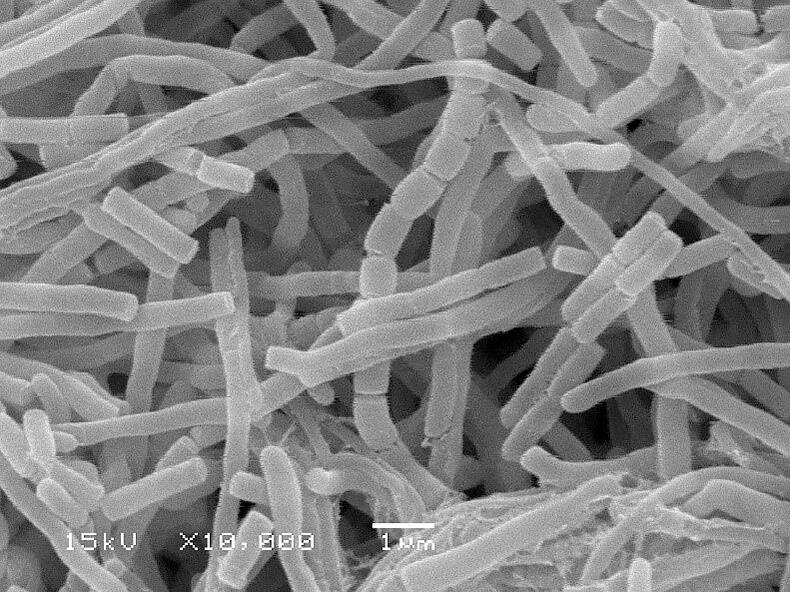Research and development of new useful substances and drugs has high expectations worldwide. Actinomycetes, which are widely distributed in nature, such as in the soil and in plants, are used to produce useful substances such as antibiotics.
The research group of Professor Yojiro Anzai of the Department of Microbiology, Faculty of Pharmaceutical Sciences, Toho University, in collaboration with the research group of Professor Javzan Batkhuu of the National University of Mongolia, through an academic exchange agreement, isolated the organism NUM-2625, which forms yellow colonies, from Comarum salesowianum as part of an experiment on the isolation of actinomycetes endogenous to Mongolian native medicinal plants. Together with Dr. Tomohiko Tamura of the National Institute of Technology and Evaluation's Biological Resource Center, the research group found that NUM-2625 is a new species of the rare actinomycete Actinocatenispora. There are three reported species of Actinocatenispora, all of which have been isolated from soils. NUM-2625 is the first species to be isolated from plants. These findings were published in the International Journal of Systematic and Evolutionary Microbiology.

(Photographed by Prof. Javzan Batkhuu, National University of Mongolia)
C. salesowianum, a member of the Rosaceae family, is a medicinal plant distributed from Central Asia to Kashmir, western continental China, and Mongolia and is known to have antimicrobial activity against gram-positive bacteria. To isolate the endophytic fungi, the exposed parts of C. salesowianum collected from the Altai Province of Mongolia were finely chopped, and small pieces that were surface sterilized with 70% ethanol and 6% sodium hypochlorite solution were ground up. When the suspension was inoculated to humic acid-vitamin agar medium, which is a selective medium for actinomycetes, and cultured at 28 °C for 3 weeks, yellow colonies were observed.
To determine the taxonomy of the strain NUM-2625 of yellow colonies, the researchers sequenced 16S rRNA gene, subjected the sequence to a BLAST search, and found that it was highly homologous (97.7-99.4%) to the three existing species of the rare actinomycete Actinocatenispora. In addition, the molecular phylogenetic analysis of the base sequence of the 16S rRNA gene with the related fungal species using the neighbor-joining method strongly indicated that NUM-2625 is a species of Actinocatenispora.
Comparisons were then made between NUM-2625 and the existing three strains of Actinocatenispora using their genomic information. In digital DNA-DNA hybridization (dDDH), the homology between NUM-2625 and the other three species was 23.3-44.7% (if it is 70% or less, it is identified as a different species). The average nucleotide identity (ANI) value was 79.58-91.56% (if it is 95% or less, it is identified as a different species). By these standards, NUM-2625 was classified as a different species of Actinocatenispora. In addition, it was observed that NUM-2625 was different from the previously known species based on comparative experiments on it's culture properties and cell components. From these observations, it became clear that NUM-2625 is a new species of Actinocatenispora. NUM-2625 was named as Actinocatenispora comari because it was isolated from the plant Comarum.

Credit: International Journal of Systematic and Evolutionary Microbiology
Although the production of useful substances has not yet been confirmed from this new species, actinomycetes are characterized by the production of diverse substances, including antimicrobials, antineoplastic agents, and immunosuppressants that are essential for current medical care. At the same time, new drugs are sorely needed as the increase of drug-resistant bacteria and the outbreak of emerging infectious diseases such as the new coronavirus infection are regarded as problems. The discovery of this new species of rare actinomycete is expected to lead not only to studies on biodiversity in previously unsurveyed sites but also on the development of new useful substances and drugs.
This article has been translated by JST with permission from The Science News Ltd.(https://sci-news.co.jp/). Unauthorized reproduction of the article and photographs is prohibited.




